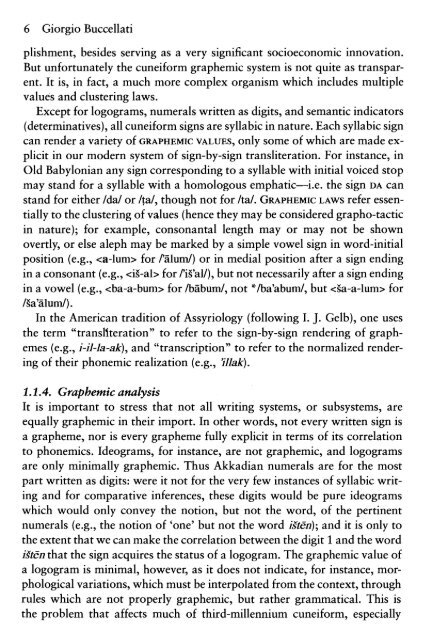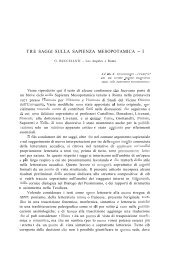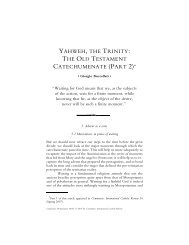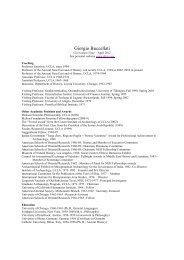Akkadian and Amorite Phonology
Akkadian and Amorite Phonology
Akkadian and Amorite Phonology
Create successful ePaper yourself
Turn your PDF publications into a flip-book with our unique Google optimized e-Paper software.
6 Giorgio Buccellatiplishment, besides serving as a very significant socioeconomic innovation.But unfortunately the cuneiform graphemic system is not quite as transparent.It is, in fact, a much more complex organism which includes multiplevalues <strong>and</strong> clustering laws.Except for logograms, numerals written as digits, <strong>and</strong> semantic indicators(determinatives), all cuneiform signs are syllabic in nature. Each syllabic signcan render a variety of GRAPHEMIC VALUES, only some of which are made explicitin our modern system of sign-by-sign transliteration. For instance, inOld Babylonian any sign corresponding to a syllable with initial voiced stopmay st<strong>and</strong> for a syllable with a homologous emphatic-i.e. the sign DA canst<strong>and</strong> for either Ida/ or /la/, though not for /ta/. GRAPHEMIC LAWS refer essentiallyto the clustering of values (hence they may be considered grapho-tacticin nature); for example, consonantal length may or may not be shownovertly, or else aleph may be marked by a simple vowel sign in word-initialposition (e.g., for /'alum/) or in medial position after a sign endingin a consonant (e.g., for PiS'aU), but not necessarily after a sign endingin a vowel (e.g., for /biibum/, not "/ba'abum/, but for/Sa'Slum/).In the American tradition of Assyriology (following I. J. Gelb), one usesthe term "transllteration" to refer to the sign-by-sign rendering of graphemes(e.g., i-il-la-&), <strong>and</strong> "transcription" to refer to the normalized renderingof their phonemic realization (e.g., 'illak).1.1.4. Graphemic analysisIt is important to stress that not all writing systems, or subsystems, areequally graphemic in their import. In other words, not every written sign isa grapheme, nor is every grapheme fully explicit in terms of its correlationto phonemics. Ideograms, for instance, are not graphemic, <strong>and</strong> logogramsare only minimally graphemic. Thus <strong>Akkadian</strong> numerals are for the mostpart written as digits: were it not for the very few instances of syllabic writing<strong>and</strong> for comparative inferences, these digits would be pure ideogramswhich would only convey the notion, but not the word, of the pertinentnumerals (e.g., the notion of 'one' but not the word isten); <strong>and</strong> it is only tothe extent that we can make the correlation between the digit 1 <strong>and</strong> the wordi&n that the sign acquires the status of a logogram. The graphemic value ofa logogram is minimal, however, as it does not indicate, for instance, morphologicalvariations, which must be interpolated from the context, throughrules which are not properly graphemic, but rather grammatical. This isthe problem that affects much of third-millennium cuneiform, especially







